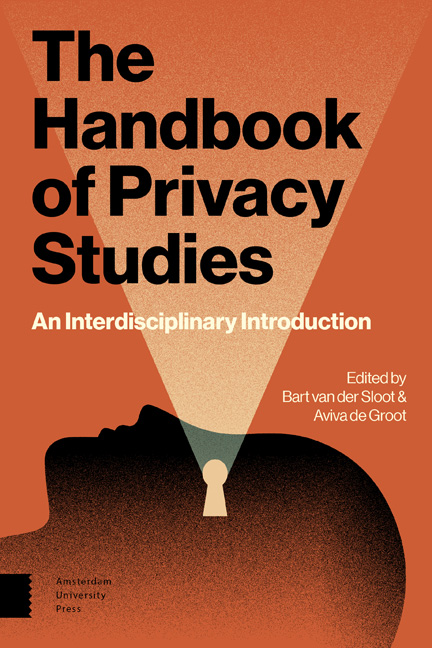Book contents
- Frontmatter
- Contents
- Introduction
- 1 Privacy from a Historical Perspective
- Legislating Privacy: Technology, Social Values, and Public Policy
- 2 Privacy from a Legal Perspective
- Three Dimensions of Privacy
- 3 Privacy from an Ethical Perspective
- Nudging: A Very Short Guide
- 4 Privacy from an Economic Perspective
- Security, Privacy, and the Internet of Things (IoT)
- 5 Privacy from an Informatics Perspective
- Political Science and Privacy
- 6 Privacy from an Intelligence Perspective
- A Privacy Doctrine for the Cyber Age
- 7 Privacy from an Archival Perspective
- Medical Privacy: Where Deontology and Consequentialism Meet
- 8 Privacy from a Medical Perspective
- Privacy Law – on the Books and on the Ground
- 9 Privacy from a Media Studies Perspective
- Diversity and Accountability in Data-Rich Markets
- 10 Privacy from a Communication Science Perspective
- Still Uneasy: a Life with Privacy
- 11 Privacy from an Anthropological Perspective
- About the Authors
2 - Privacy from a Legal Perspective
- Frontmatter
- Contents
- Introduction
- 1 Privacy from a Historical Perspective
- Legislating Privacy: Technology, Social Values, and Public Policy
- 2 Privacy from a Legal Perspective
- Three Dimensions of Privacy
- 3 Privacy from an Ethical Perspective
- Nudging: A Very Short Guide
- 4 Privacy from an Economic Perspective
- Security, Privacy, and the Internet of Things (IoT)
- 5 Privacy from an Informatics Perspective
- Political Science and Privacy
- 6 Privacy from an Intelligence Perspective
- A Privacy Doctrine for the Cyber Age
- 7 Privacy from an Archival Perspective
- Medical Privacy: Where Deontology and Consequentialism Meet
- 8 Privacy from a Medical Perspective
- Privacy Law – on the Books and on the Ground
- 9 Privacy from a Media Studies Perspective
- Diversity and Accountability in Data-Rich Markets
- 10 Privacy from a Communication Science Perspective
- Still Uneasy: a Life with Privacy
- 11 Privacy from an Anthropological Perspective
- About the Authors
Summary
Introduction
This chapter adopts a ‘Western’ perspective, focusing on the United States of America, and in particular Europe. It will focus primarily, but not exclusively, on the informational aspect of privacy. Section 2 will discuss the role and function of privacy in the legal realm; it will engage with the origins of privacy in the legal realm, the way it is protected in both national and international legal orders and set out some general characteristics of the right to privacy. Section 3 will provide an overview of the most important legal principles; it will look specifically at the basis which underpins privacy in Europe and the USA. Section 4 will recount some of the traditional debates in legal research; such as whether people have the right to control or even sell their personal data. Section 5, discussing new challenges, will engage with the tensions between privacy protection and developments known as Big Data. Finally, section 6 concludes and provides some suggestions for further reading.
Before discussing the role of privacy within the legal realm, it is important to discuss five general characteristics of the legal realm itself. This section will discuss the notion of regulation, the regulator, norms, laws and fields of law.
What is regulation?
Without regulation, there would be anarchy. Most societies do not want anarchy, so they regulate. Regulation is based on norms. Law is one way to regulate. Laws are always the mitigating factor between fact and fiction, between practice and norm, between the situation that is (for example, a society in which there is violence and murder) and the desired situation (for example, a society in which no violence exists). Obviously, law is never fully successful in this endeavour. Although the legal regime provides that murder is prohibited (the norm), people still are being murdered (fact). To ensure compliance with the law, various tools of enforcement exist – these mostly depend on force (by the state). Consequently, the legal domain is always a combination of two elements: norm and force. Law enforcement can be achieved through various means, such as imprisonment, fines, namingand- shaming, and capital punishment. Law has traditionally focused on retroactive forms of enforcement, that is, when a person violates the law she is sanctioned.
- Type
- Chapter
- Information
- The Handbook of Privacy StudiesAn Interdisciplinary Introduction, pp. 63 - 136Publisher: Amsterdam University PressPrint publication year: 2018



